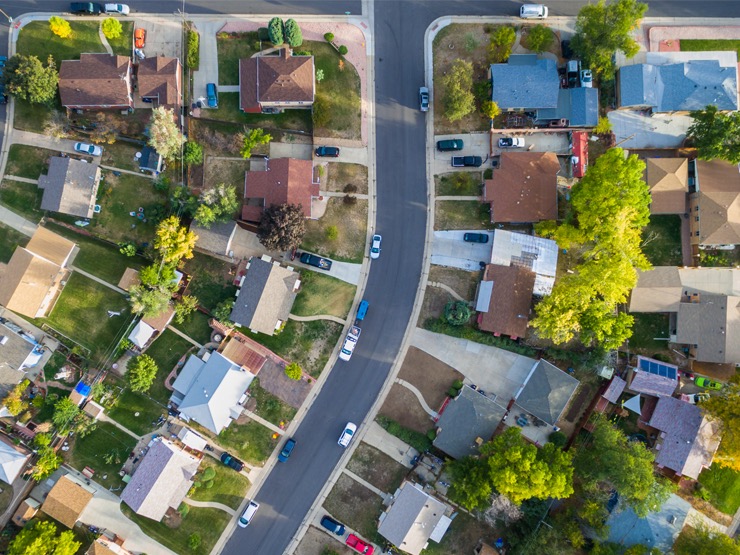The housing market is off to a busy start in 2022, with new records being observed in pace of home-price growth and median listing price last month.
That’s setting the stage for a busy spring, considered the kickoff to the prime housing market season. But will it compare to the double-digit price gains observed month over month in the spring and summer of 2021?
It’s hard to say, especially with ongoing inflation and economic turmoil resulting from the Russian invasion of Ukraine that began in late February. Seattle-based Zillow Group Inc. (NASDAQ: ZG), in a report released Feb. 16, predicted annual home values to continue accelerating through the spring, peaking at 21.6% in May before slowing to 17.3% by January 2023.
“The robust long-term outlook is driven by our expectations for tight market conditions to persist, with demand for housing exceeding the supply of available homes,” Zillow researchers wrote. “However, downside risks to our forecast remain. Elevated inflation heightens the risk of near-term monetary policy tightening, which would result in higher mortgage rates and weigh on housing demand.”
Last month, U.S. home listing prices grew at an annual rate of 12.9%, according to data from Santa Clara, California-based Realtor.com.
George Ratiu, manager of economic research and senior economist at Realtor.com, said inflation and mortgage rates continue to be among the biggest indicators to watch in the housing market as it relates to where demand and home-price appreciation will go in the coming months.

“It seems we have certainly gotten a jump-start on the spring season already,” Ratiu said. “We’re seeing demand for homes continue very strongly. With mortgage rates surging, a lot of buyers are seeing that window of opportunity closing.”
Although mortgage rates have tapered off more recently, rates have gone from around 3.1% at the end of December to approaching 4% in early February, which caused a lot of buyers to enter the market in January and February, historically slower months for the housing market.
The spring season could be busier than economists initially predicted for this year, Ratiu added. But there are also indications inventory is starting to improve, with more resale homes being listed as well as a higher pace of new construction permits, starts and completions.
A survey by Realtor.com last spring found only 10% of homeowners expected to list their homes within the next 12 months. In the fall, when the Delta variant was surging, 26% of homeowners surveyed by Realtor.com indicated they planned to put their homes on the market in the next year.

Ratiu said as more pandemic-related restrictions are relaxed and people go back to the office and return to other so-called normal activities, that could spur more normalcy in the housing market, too. That includes the potential for a greater number of people to list their homes.
Nadia Evangelou, senior economist and director of forecasting at the National Association of Realtors, said rising inflation, especially since Russia’s invasion of Ukraine, is injecting more uncertainty and concerns into the larger economic picture, which has ripple effects on housing.
The higher costs of everything, including for-sale and rental housing, is making it especially tough for the first-time homebuyer. Evangelou said 20% of home sales in January were from by first-time buyers, down from 33% a year ago. Meanwhile, all-cash sales rose from 19% to 27% in the span of a year.
Evangelou said the rising mortgage rates may propel more buyers to try to buy a house in the spring months, but neither she nor Ratiu are expecting levels of home-price appreciation at the same levels as last year.
“We don’t expect to have double-digit appreciation like we did in 2021 … but, compared to 2019, it will outperform,” Evangelou said.
Ratiu said of the 50 markets Realtor.com tracks each month, a handful have actually posted year-over-year declines in recent months, especially Rust Belt cities like Detroit. He said it’s not consistently every month that those markets see declines, but trends in downward price appreciation underscore the thesis that the housing market may, at least in those markets, start to normalize soon.
It’s not because people are fleeing those areas either, he continued. Rather, Detroit had a 6% year-over-year gain in new homes coming to market from February 2021 to February 2022. Milwaukee had a 22% annual jump in available homes. Sun Belt markets, which typically lead the nation in home-price growth and have the most demand and constrained inventory, have skewed the national picture somewhat.
“It’s very much an Econ 101 relationship: As supply increases, that puts downward pressure on prices, which is what we would normally expect,” Ratiu said. “As more homes come to market, consumers have more choices, some homes linger on the market longer, there’s an increasing number (of homes) with price reductions. That points to a more normal market.”
The Article is from Austin Business Journal, copyright belongs to owner





